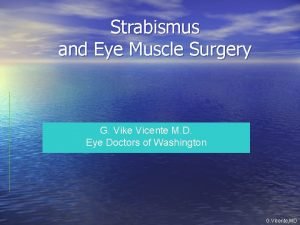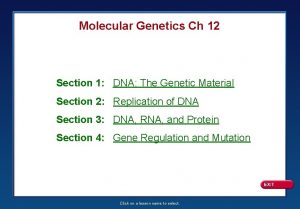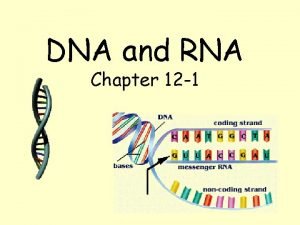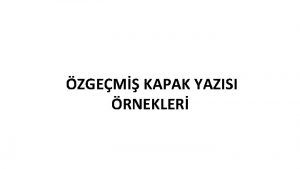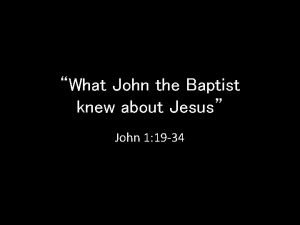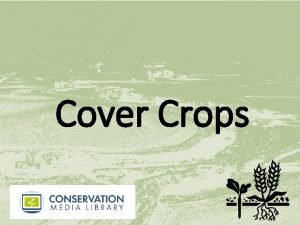Chapter 2 Material We Will Cover Next We






















- Slides: 22

Chapter 2 Material We Will Cover Next • We need to write differential equations representing the system or subsystem. • Then write the Laplace transform of the system. • Then we will write the overall input-output relationship of the interconnected components. That is the Transfer Function T(s), also called G(s). • Section 2. 2 in the text includes tables, in particular Table 2. 2, p. 44, of various variables (elements) used in modeling physical systems and differential equations describing ideal elements of physical systems. • It is expected that the student is already familiar with these concepts. In general the student will have access to this information for exams if needed. • We will investigate making linear approximations of non-linear elements. • We will briefly mention the Laplace Transform • Get our first exposure to poles and zeros and to the Characteristic Equation • Discuss Partial Fraction Expansion • Introduce Final and Initial Value Theorems 1

Control Systems are Often More Complex Than Single Loops • One forward path • Four transfer functions in the forward path G 1, G 2, G 3, G 4. • Three Feedback Loops. • Three Summing Junctions 2

Block Diagram = Flow Graph Besides Block diagrams, control systems are often represented using Flow Graphs Block Diagram Flow Graph H 3 R(s) 1 G 2 -H 1 1 G 3 G 4 1 C(s) -H 2 Note that two of the H transfer functions in the Flow Graph have negative signs. This is necessary since the summing nodes do not have any signs associated with them as in the block diagram. 3

Solve For The Transfer Function R(S) + E C(s) G 1 _ F H Solution: C(s) = G 1 E F = C(s)H E = R(s)-F E = R(s)- C(s)H C(s) = G 1[R(s)- C(s)H] C(s) +C(s)HG 1 = G 1(R(s) C(s)[1 + HG 1] = G 1(R(s) (1) (2) (3) (4) (5) C(s)/R(s)=G 1/(1+G 1 H) 4

Solve For The Transfer Function R(S) + E G 1 A G 2 B + + C(s) _ F Solution: C(s) = A + B A = G 1 E B = G 2 E F = HB E = R(s)-F H (1) (2) (3) (4) (5) 5

Attempt to Solve For The Transfer Function D A B E F J M C K 6

Overall Transfer Function Mason’s Gain Rule The overall Transfer function can be obtained from the formula: • Mk is the transmittance of each forward path between a source and a sink node • • ∑L 1 is the sum of the transmittances of each closed path. • ∑L 2 is the sum of the product of the transmittances of all possible combinations of two non-touching loops. • ∑L 3 is the sum of the product of the transmittances of all possible combinations of three non-touching loops. • ∆k is the cofactor of Mk. It is the determinant of the remaining sub-graph when the forward path which produces Mk is removed. Thus it does not include any loops which touch the forward path in question. It is equal to unity when the forward path touches all the loops in the graph of when the graph contains no loops. 7

Applying Mason’s Gain Rule H 3 R(s) 1 G 2 -H 1 1 G 3 G 4 1 C(s) -H 2 8

Applying Mason’s Gain Rule G 9 R(s) G 1 G 2 G 3 -H 2 G 5 G 4 G 6 -H 4 -H 1 G 7 G 8 C(s) -H 5 -H 3 9

Using Mason’s Gain Rule Solve for the Transfer Function – C/R 1 R A G 1 1 1 B G 2 G 3 C G 4 1 -1 -1 -1 10

Applying Mason’s Gain Rule 1 R A G 1 1 1 B G 2 G 3 C G 4 1 -1 -1 -1 11

Derive Transfer Function for Previous Control System Example R(s) + Manipulated Variable Error Feedback C(s) H = 0. 5 Note: The denominator, set equal to zero, is called the Characteristic Equation 12

Spring Mass System Input = f(t) b K Process Output = y(t) Block Diagram M f y Block Diagram F(s) General Quadratic Form Y(s) F(s) Y(s) 13

More on the Characteristic Equation Block Diagram F(s) General Quadratic Form Y(s) F(s) Y(s) 14

Characteristic Equation • The denominator polynomial of the transfer function when set equal to zero is called the characteristic equation C. E. . • • • The roots of the C. E. are the poles of the system. The roots of the transfer function’s numerator are the zeros of the system. Poles and zeros are critical frequencies At the poles, the transfer function becomes infinite At the zeros the transfer function becomes zero. The complex frequency s-plane plot of the poles and zeros graphically portrays the character of the natural transient response of the system. jω x 4 -6 -5 4 -4 -3 -2 -1 x -4 15

Root Location vs Stability of the 2 nd order C. E. jω • Any time the roots are equal and real, the system is critically damped, no overshoot. Double Root X jω X • Any time the roots are unequal and real, the system is overdamped, no overshoot. X 16

Root Location vs Stability of the 2 nd order C. E. Continued jω X • Anytime the roots are complex conjugates, the system experiences damped oscillation X jω X • If the poles lie on the imaginary axis the system is marginally stable. It oscillates. X 17

Root Location vs Stability of the 2 nd order C. E. Continued • Anytime the roots are in the RHP the system is unstable and diverges jω X X 18

Deriving a Transfer Function for a Control System Component Consider a DC Torque Motor ea Ra J, b La Ia em ө, ω J = Motor Inertia, could also include load inertia b = Friction Ra = Motor winding resistance La = Motor inductance em = Back emf KT = Motor Torque Sensitivity – A motor parameter Km = Relates back emf to shaft speed, em = Kmω 19

Deriving a Transfer Function for a DC Torque Motor Continued ea Ra J, b La Ia em ө, ω KVL around loop: Motor and Load Inertia Equations (1), (2), (3), and (4) are called Equilibrium Equations 20

Constructing Block Diagram for a DC Torque Motor From Equilibrium Equations Ia(s) KT KT KT Em(s) Ea(s) + Ea - E m - Ia(s) KT Em(s) Tm(s) Kms 21

Constructing DC Motor Transfer Function from Block Diagram Using Mason’s Rule Ea(s) + Ea - E m - Ia(s) KT Em(s) Tm(s) Kms 22
 X.next = x.next.next
X.next = x.next.next Manifest squint meaning
Manifest squint meaning Alternate prism cover test
Alternate prism cover test Forced duction test procedure
Forced duction test procedure Basic geometric features of symbology
Basic geometric features of symbology Usage variance formula
Usage variance formula Cultural relativism definition
Cultural relativism definition Examples of non material culture
Examples of non material culture Examples of non material culture
Examples of non material culture Why are materials useful
Why are materials useful Chapter 18.2 writing a cover letter
Chapter 18.2 writing a cover letter Molecular genetics section 1 dna the genetic material
Molecular genetics section 1 dna the genetic material Chapter 12 section 1 molecular genetics answer key
Chapter 12 section 1 molecular genetics answer key Mechanics of materials chapter 7
Mechanics of materials chapter 7 Chapter 12 section 1 dna the genetic material
Chapter 12 section 1 dna the genetic material Chapter 12 section 1 the genetic material
Chapter 12 section 1 the genetic material Chapter 12 dna and rna section 12-1
Chapter 12 dna and rna section 12-1 Section 12-1 dna
Section 12-1 dna Kapak yazısı örneği
Kapak yazısı örneği Cover page essay
Cover page essay Lord of the flies book cover
Lord of the flies book cover Cover letter rubric
Cover letter rubric Cover letter örneği
Cover letter örneği


